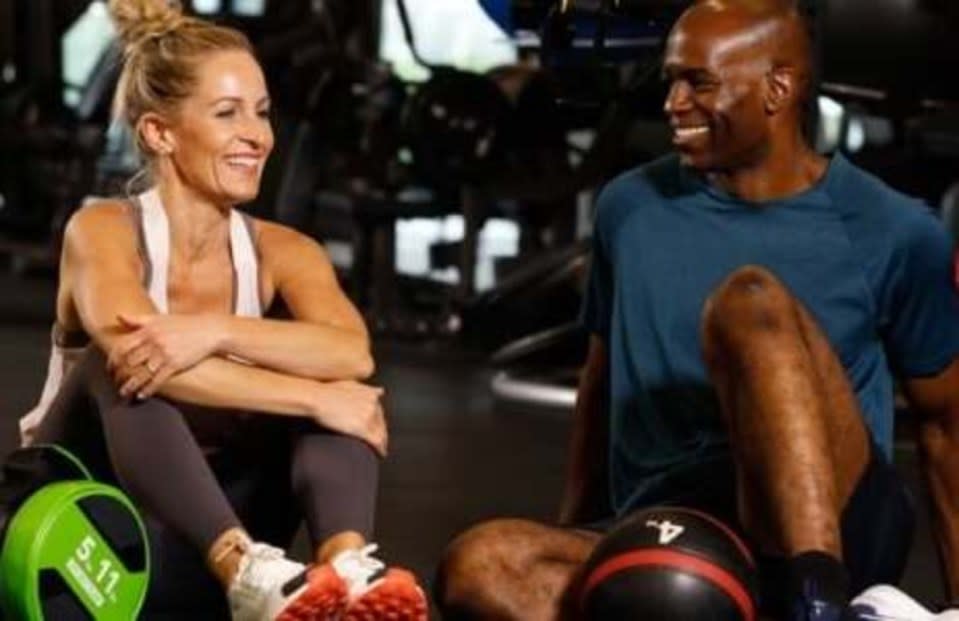David Lloyd’s quest to ‘premiumise’ clubs gets members back on the treadmill

Fitness chain David Lloyd Clubs has seen its members return to its gyms in droves after it decked them out with luxury spas, outdoor dining areas and “premium” co-working spaces.
The Hatfield-headquartered group has added “state-of-the-art spa retreats” – which feature heat rooms, hydro pools and outdoor fire pits – to 31 of its clubs since the start of 2023, with 13 more in the pipeline by the end of this year.
This drive to tap into the growing premium health and wellbeing market appears to be paying off for the group with its membership up by 3.5 per cent in the year ending December 31, 2023, with around 755,000 people signed up across its 133 sites.
Of those, 61 per cent were signed up to one of David Lloyd’s premium packages, driven by more than 81 per cent of new sign-ups choosing a ‘platinum’ or ‘diamond’ membership over a basic plan.
This increased spend per customer helped to deliver a £101m boost to the group’s revenue, which hit £756m during the period, up from £655m the year before.
As a result of this increase the fitness heavyweight cut its pre-tax loss from more than £30m in the previous period to just under £26m.
On top of attracting a slew of new members the group has also increased the number of existing customers visiting the clubs.
Just under 73 per cent of registered members used David Lloyd’s facilities during its most recent financial year – an increase of 2.7 per cent on the period before.
In a business report published to Companies House, the company said: “Financial year 2023 was a year of investment and growth, with strong demand driving improving yields and returns.
“The group delivered a strong performance over the past 12 months, both operationally and financially, with growth across key metrics, including membership numbers, revenue and adjusted EBITDA.
“We are ‘premiumising’ our offering to deliver yield and to further differentiate David Lloyd Clubs (DLC) from other competitors.

“The group has continued to develop its product range to deliver an overall premium health and wellness experience. DLC bespoke products include Blaze, Cyclone, Rhythm, Battlebox, Spirit and Ignite.
“A key strategic initiative in this area has been the roll out of our spa retreats.
“We now have 31 open as at the date of this report and are delighted with the positive reception that they have received from our members.
“As we open these spa retreats we premiumise other club facilities. Not every club within the estate has the space to accomodate a spa retreat so we are reviewing how to premiumise these clubs.
“We continue to improve the overall offering from the look, feel and style perspective as part of our strategy to further differentiate from the market.
“For example, we believe there is an opportunity to invest in facilities to expand and premiumise gyms, outdoor dining area, co-working space, pools and locker areas.”
Who owns David Lloyd Clubs?
David Lloyd has been owned by TDR Capital since 2013 when it took control from previous owner London & Regional and Caird Capital LLP for £750m.
In June 2023 it was reported that the UK equity firm – which last month agreed to become the majority owner of supermarket chain Asda – was looking to exit the business and was engaging with bankers from Morgan Stanley to review its strategic options.
TDR Capital was reportedly hoping to secure a £2bn ($2.6bn) deal, according to Reuters. There have been no updates on the situation since July last year.
TDR Capital portfolio also includes popular UK businesses including the UK arm of fast-food chain Popeyes and Stonegate pub company.
How does the group compare to Pure Gym and other competitors?
Low-cost operator The Gym Group grew its revenue 18 per cent in 2023 with the average number of members using its facilities rising eight per cent.
Despite this the group reported a loss before tax of £8.4m, an improvement from the £19.3m loss reported the year before.
Fellow value chain Pure Gym increased its membership from 1.2 million in the year ending December 31, 2022, to 1.4 million in the most recent period.
It also opened 40 new locations over the 12 months, with its revenue rising from £476m to just under £550m, driving its pre-tax profit to £59m, up from £31m the year before.
Cheshire-based Total Fitness saw its turnover increase from £36m to £39.9m in the year to June 30, 2023, while its pre-tax profit went from £961,000 to £1.2m.
These positive financial results followed the group’s return to the black for the first time since 2015 during its previous financial year.
JD Sports Gyms boosted its membership to 453,000 in the 12 months ending January 28, 2023, up from 400,000 the year before, almost doubling its turnover from £47.4m to just over £81m.
Its pre-tax profit jumped from £2.2m to £13.5m in the same period.

 Yahoo Finance
Yahoo Finance 